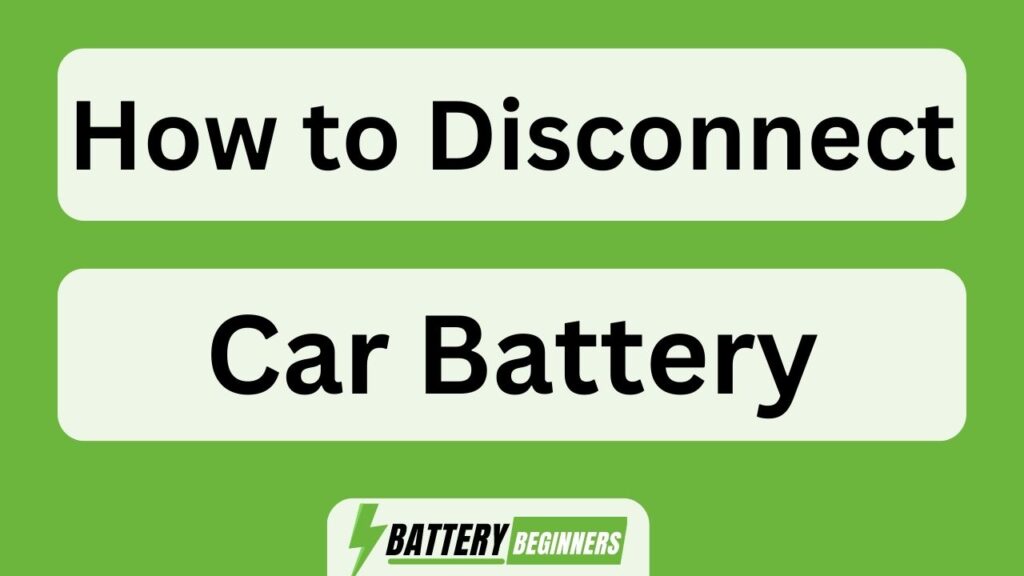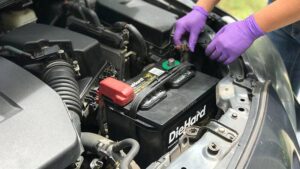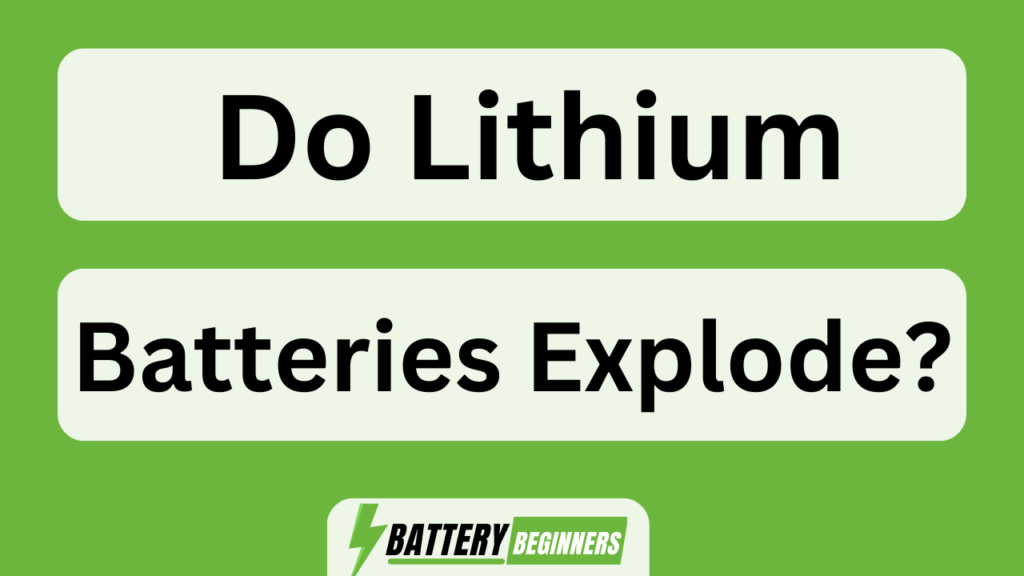In our increasingly interconnected world, the reliance on automobiles has become a necessity for many individuals. However, as with any complex machinery, there may be occasions when it becomes necessary to disconnect the car battery. This process requires careful attention to detail and adherence to specific steps in order to ensure safety and prevent damage to both the vehicle and its components.
In this article, we will explore the precise techniques involved in disconnecting a car battery. By following these detailed instructions and using appropriate tools and equipment, individuals can confidently navigate this task without compromising their safety or that of their vehicle. Additionally, we will provide guidance on how to properly store the disconnected battery and dispose of an old one in an environmentally responsible manner.
Whether you are seeking basic automotive maintenance knowledge or preparing for emergency situations, mastering the art of disconnecting a car battery is an essential skill for all automobile owners.
Key Takeaways Of How To Disconnect Car Battery
- Gather necessary tools: battery disconnect tool, wrench or pliers, protective gloves
- Familiarize with battery components: case, terminals, electrolyte, plates
- Turn off all electrical accessories and ignition before disconnecting the battery
- Inspect battery for corrosion and clean with baking soda-water mixture and wire brush
Gather the Necessary Tools and Equipment
To successfully disconnect a car battery, it is essential to gather the necessary tools and equipment for the task at hand. Choose the right battery disconnect tool to ensure a safe and efficient disconnection process. This tool may vary depending on the type of battery terminal in your car, such as a wrench or pliers.
Additionally, wearing protective gloves is crucial to prevent any potential injuries caused by electrical shocks or battery acid exposure. These gloves provide insulation and protect your hands from corrosive substances.
Once you have gathered these tools and put on your gloves, you can proceed to park your car in a safe and well-ventilated area where you can safely work without any obstructions or hazards present.
Park Your Car in a Safe and Well-Ventilated Area
Located in a secure and adequately ventilated locale, ensure the vehicle is safely parked before undertaking any disconnection procedure. Car battery maintenance necessitates proper battery disconnection to avoid potential hazards.
Before proceeding with this process, it is crucial to park your car in a safe area that offers ample ventilation. This ensures the dissipation of any potentially harmful gases that may be emitted during the disconnection process. To create a mental picture, imagine parking your vehicle in an open garage or outside surrounded by fresh air. This will provide a safe environment for both yourself and the car’s components.
Familiarize yourself with the battery and its components to proceed smoothly with the subsequent section about ‘familiarize yourself with the battery and its components.’
Familiarize Yourself with the Battery and its Components
One important step in car battery maintenance involves becoming familiar with the various components of the battery. This knowledge is essential for proper battery maintenance and to ensure its longevity. The battery, a crucial part of a vehicle’s electrical system, consists of several components that work together to provide power.
To gain a better understanding of the battery and its components, it is helpful to refer to the following table:
| Component | Description |
|---|---|
| Battery Case | Protective enclosure that houses the internal components |
| Positive Terminal | Connects the positive side of the battery to other electrical parts |
| Negative Terminal | Connects the negative side of the battery to other electrical parts |
| Electrolyte | Acidic solution that allows for chemical reactions in the battery |
| Plates | Lead-based electrodes immersed in electrolyte |
By familiarizing oneself with these components, one can better understand how they contribute to overall battery maintenance and extend its lifespan. Understanding each component’s role enables car owners to take appropriate measures such as checking for corrosion on terminals or monitoring electrolyte levels. This knowledge will be particularly useful when proceeding to turn off all electrical accessories and ignition in subsequent steps without causing damage or accidents.
Turn off all Electrical Accessories and the Ignition
After familiarizing yourself with the various components of the car battery, it is imperative to symbolically silence all electrical accessories and the ignition in order to prevent any potential damage or accidents.
Disconnecting a car battery safely requires taking certain precautions to ensure a smooth process. To turn off all electrical accessories, begin by shutting down the engine and removing the key from the ignition.
Next, power off any lights, radio, or other electronic devices that may be connected to the battery. This step ensures that there is no active power flow during disconnection. By following these steps diligently, you minimize the risk of sparks or short circuits that could cause harm or damage to both yourself and your vehicle.
Now, we can proceed to disconnecting the negative terminal.
Disconnect the Negative Terminal
To safely disconnect a car battery, it is necessary to first focus on the negative terminal. Start by removing the battery’s negative cable from its terminal. This can be done using a wrench or pliers to loosen and remove the nut that secures the cable to the terminal.
Once the cable is removed, make sure it is placed away from any metal surfaces in order to prevent accidental contact and potential sparking. By disconnecting the negative terminal first, you are effectively cutting off power supply to all electrical accessories and preventing any unwanted electrical discharge during the process.
In order to reconnect the battery later on, it is important to remember this step when reattaching the cables.
Moving forward, let’s now discuss how to disconnect the positive terminal.
Disconnect the Positive Terminal
Removing the positive terminal is a crucial step in the process of safely disconnecting an automotive power source.
To effectively remove the battery from a car, follow these steps:
- Locate the positive terminal: Identify the red-colored terminal marked with a plus sign.
- Ensure safety precautions: Put on protective gloves and eyewear to avoid any potential hazards.
- Loosen the terminal connection: Use a wrench or pliers to loosen the nut securing the positive cable to the battery post.
- Remove the positive cable: Gently lift and wiggle the cable until it comes off completely.
By following these steps, you can remove the battery’s positive terminal without causing any damage or injury.
Once disconnected, proceed to inspecting the battery and cleaning any corrosion as part of regular battery maintenance.
Inspect the Battery and Clean any Corrosion
After disconnecting the positive terminal, it is important to inspect the battery and clean any corrosion that may have accumulated. This step is crucial as corrosion can impede the proper functioning of the battery and reduce its lifespan.
To begin, visually inspect the battery for any signs of corrosion such as white or greenish deposits on the terminals. If corrosion is present, it can be removed by using a mixture of baking soda and water and a wire brush or a specialized battery cleaning tool.
It is essential to take safety precautions during this process, such as wearing protective gloves and eyewear, to avoid contact with corrosive materials. Once the cleaning process is complete, ensure that all residue has been thoroughly rinsed off with clean water.
As we move forward into storing the disconnected battery safely…
Store the Disconnected Battery Safely
The proper storage of a disconnected automotive battery is crucial to ensure its longevity and safety. Battery storage involves specific considerations to prevent damage and maintain optimal performance. When storing a disconnected battery, it is important to keep it in a cool, dry location away from direct sunlight or extreme temperatures. Placing the battery on a clean, non-conductive surface such as wood or plastic can prevent any accidental discharge or electrical shorts. Additionally, it is recommended to periodically check the battery voltage and recharge it if necessary during long-term storage. Properly storing the disconnected battery not only extends its lifespan but also reduces the risk of accidents or hazardous incidents. By following these guidelines for battery storage and maintenance, one can ensure that their vehicle’s battery will be ready for reconnection when needed.
Transitioning into the subsequent section about ‘reconnect the battery when needed’, it is essential to understand the correct procedure to reconnect the battery safely and efficiently without causing any damage or malfunctions.
Reconnect the Battery when Needed
After safely storing the disconnected battery, it is important to know how to reconnect it when needed. Reconnecting a car battery requires following certain steps and precautions to ensure a successful reconnection and avoid any potential issues.
Firstly, inspect the battery terminals for any signs of corrosion or damage, ensuring they are clean and free from debris. Then, align the positive terminal with the positive cable clamp and tighten it securely using a wrench. Repeat this step for the negative terminal as well.
It is crucial to double-check that all connections are tight and secure before starting the vehicle. In case of any troubleshooting issues such as difficulty fitting the clamps or if there is no power after reconnecting, consulting a professional or referring to the car’s manual can provide valuable guidance.
Transitioning into disposing of the old battery properly involves following specific guidelines set by local regulations to ensure environmental safety without causing harm.
Dispose of the Old Battery Properly
To ensure environmental safety and prevent harm, it is essential to follow specific guidelines set by local regulations when disposing of the old battery properly. When dealing with car batteries, it is crucial to dispose of battery acid safely and recycle the batteries. Here are three important considerations in this process:
- Acid Neutralization: Battery acid contains hazardous chemicals that can harm the environment if not handled correctly. It is vital to neutralize the acid using a specialized solution before disposal.
- Recycling Centers: Many recycling centers accept car batteries for proper disposal. These facilities have the necessary equipment and expertise to handle hazardous materials safely.
- Local Regulations: Different regions may have specific regulations regarding how to dispose of car batteries. It is important to research and adhere to these guidelines to ensure compliance with local laws.
By following these guidelines, individuals can play their part in protecting the environment while responsibly disposing of old car batteries.
Frequently Asked Questions
How long does it take to disconnect a car battery?
Disconnecting a car battery is essential before performing any work on it to ensure safety. It typically takes a few minutes, depending on the vehicle model and battery location. Neglecting this step can lead to potential hazards due to electrical shock or short-circuiting.
Can I disconnect the battery while the car is running?
Disconnecting a car battery while the engine is running poses significant risks. It can cause damage to the electrical system, potential loss of power to essential components, and even result in injury due to sparks or electrocution.
Is it necessary to disconnect both the negative and positive terminals?
When it comes to battery maintenance and car battery safety, it is essential to disconnect both the negative and positive terminals. This ensures complete isolation of the battery and minimizes the risk of electrical shock or damage to the vehicle’s electrical system.
Can I wear gloves while disconnecting the battery?
Safety precautions should always be taken when disconnecting a car battery. It is recommended to wear gloves as protection against any potential electrical shocks. Additionally, using proper tools such as insulated wrenches can further ensure safety during the process.
How often should I inspect and clean the battery for corrosion?
Inspecting and cleaning battery terminals regularly is crucial for maintaining optimal performance. To remove corrosion from car battery terminals, use a mixture of baking soda and water, scrub with a wire brush, rinse with clean water, and apply petroleum jelly to prevent future corrosion.
Conclusion
In conclusion, disconnecting a car battery requires proper tools, knowledge of the battery components, and safety precautions.
It is important to park the car in a safe and well-ventilated area before starting the process. Turning off all electrical accessories and the ignition is crucial to avoid any potential risks.
Inspecting and cleaning any corrosion on the battery is recommended for its optimal performance.
Additionally, storing the disconnected battery safely and disposing of the old battery properly are necessary steps to ensure environmental responsibility.
Interestingly, according to AAA, car batteries typically last around three to five years on average before needing replacement.







